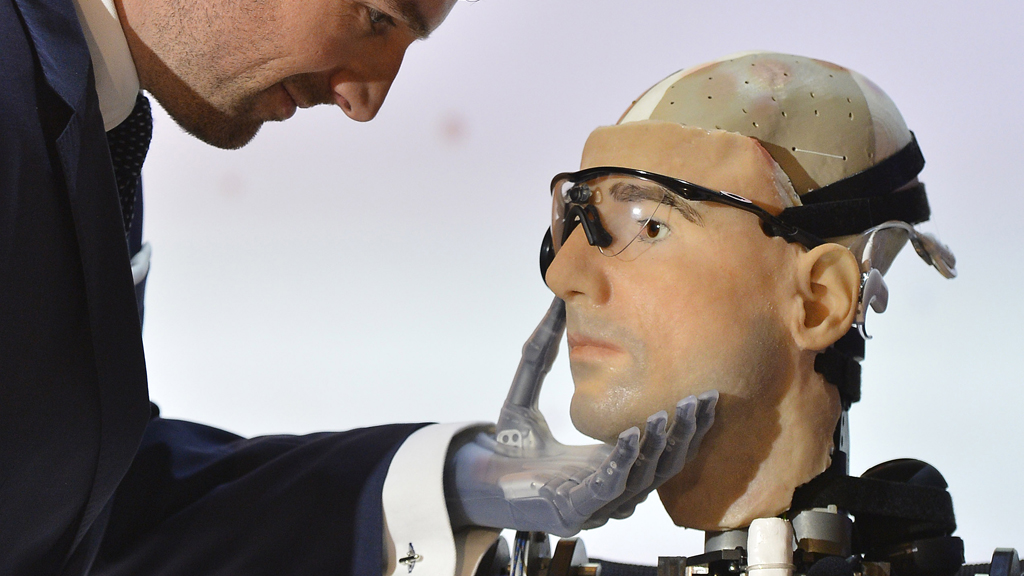Bionic man makes us ask what it means to be human
The bionic man featured in a Channel 4 documentary this week may not be a realistic copy of a human – but robots prompt questions about what we want from our most sophisticated machines.
When the science fiction film Blade Runner was released, a future in which androids would be almost indistinguishable from humans seemed just decades away, writes Channel 4 News Technology Producer Geoff White.
Director Ridley Scott’s envisioning of Philip K Dick’s novel imagined such a reality by 2019 (already pushing back Dick’s timeline by almost 30 years).
Compared to the “replicants” of Dick’s Do Androids Dream of Electric Sheep, the bionic man set to go on display at the Science Museum this week looks, aesthetically, light years behind the times.
The bionic man has a convincingly human face, but from the neck down he’s all robot. In fairness, the project’s aim was not to create a humanoid replica, but to demonstrate that vital human systems can be mimicked by man-made technology.
Artificial blood circulates in his veins, and his heart, lung and kidney are miracles of biotechnology. But let’s face it: one cannot imagine Rutger Hauer’s heartbreaking Blade Runner soliloquy coming from this robot’s clamped lips.
More from Channel 4: How to Build a Bionic Man
Exact copies?
This highlights a fundamental question in robotics: is it the job of the robot builder to make exact copies of humans?
Just a few years after Dick’s book was published, robotics professor Masahiro Mori coined the term “uncanny valley” to describe the revulsion we feel when confronted with a creation that is too realistic. There is a point, hypothesised Mori, when the robot technology gets so real that it becomes creepy.
History abounds with fictional examples of humanity’s hostility towards non-humans who presume to imitate us, from Mary Shelley’s Frankenstein to the Terminator films.

Scientific research has subsequently given Mori’s thesis more credence, and as android technology has advanced his theory has become ever more relevant, with two schools of thought emerging.
Some argue that, if technology which performs human tasks is to be accepted and integrated into our world, a physical resemblance to us will smooth the passage. Added to which, the attempt to copy the marvel that is the human body is a pretty good ultimate goal to aim for.
And while we may struggle now to produce androids indistinguishable from the real thing, it will happen one day (though perhaps not by 2019).
Humanoid folly
On the other side, some argue that the pursuit of a perfect robot humanoid is folly, particularly if the attainment of such realism will only horrify the average human. They fear it is motivated by the vanity of trying to create a product in our own image; a misguided modern-day God complex.
Instead, they argue, we should build robots on their own terms, letting function dominate form.
Arguably, the latter is the more sensible side of the debate, since it frees robotics from the restrictions of imitation and avoids the uncanny valley altogether.
But it is likely we will continue to see the pursuit of the human form for one simple reason, that being confronted with something which attempts to imitate us forces us into a debate we find irresistible: what it means to be human.